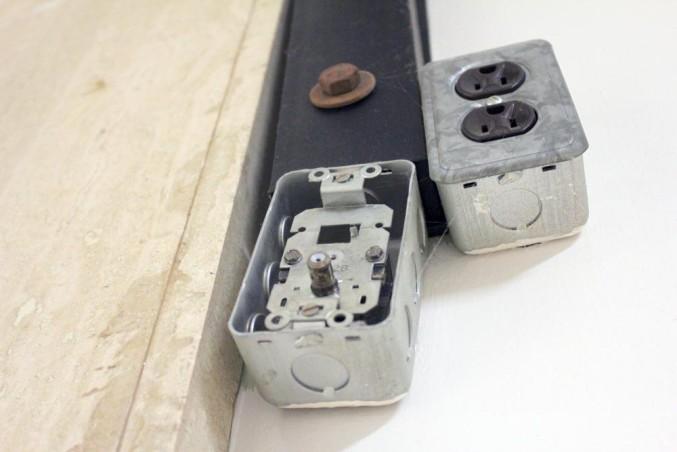By Samantha Sim
Water trickles down steadily from a missing ceiling panel in the Kerr Hall basement, while a black garbage bag attempts to stop the persistent leak. On the third floor of the building, a row of four missing ceiling panels have left wires hanging over students as they walk by to get to their chemistry labs. In other parts of the building, electrical outlets with missing socket covers and chipping wall panels serve as a constant reminder that the building has seen better days.
Keeping up with maintenance of the 48-year-old building has presented a challenge for Ryerson as the university has attempted to retrofit inaccessible space, aging labs and deteriorating facilities.
Ryerson President Sheldon Levy said maintaining Kerr Hall is difficult and costly largely because it needs more work than newer facilities.
“It’s like your house — as it gets old, things start breaking and the maintenance goes up,” he said.
This summer, Ryerson spent a total of $5.3 million on campus repairs and a significant part of that funding was spent on Kerr Hall updates.
Most of the work in the building was concentrated in Kerr Hall North, which saw three of its labs renovated. Room 307 B/C received an electrical upgrade that was supposed to be completed in September. The rest of the lab will be finished during the school year.
Kerr Hall North room 205 is receiving a fume hood reconfiguration and an expansion to allow for simultaneous experiments. The lab’s work-study environment will be improved with new light fixtures and ceiling.
The chemical engineering polymer research lab in room 113A got a new ventilation unit and benches, as well as new flooring, wall and ceiling finishes. Kerr Hall East received two significant lab upgrades, a thermodynamic/heat transfer lab (KHE-029) and a fluid mechanics lab (KHE-031).
In addition, Kerr Hall is getting an electrical upgrade that will increase the current electrical capacity to a high-voltage electrical feed of 13.8 kV and will allow for even more future developments and expansions of the building’s lab facilities. The project is slated for an August 2012 completion.
But some students argue maintenance should prioritize updating lab equipment instead of fixing the physical space in Kerr Hall.
“Some of the instruments are really old,” says Phillip Junor, a second-year chemistry student. “They seem to replace things like a broken cupboard door when we really need new analytical balances.”
Senyo Akakpo, a third-year biophysics student, also believes students’ priorities lie elsewhere.
“We don’t really care about the lab as a whole, the equipment is the most important.”










Leave a Reply